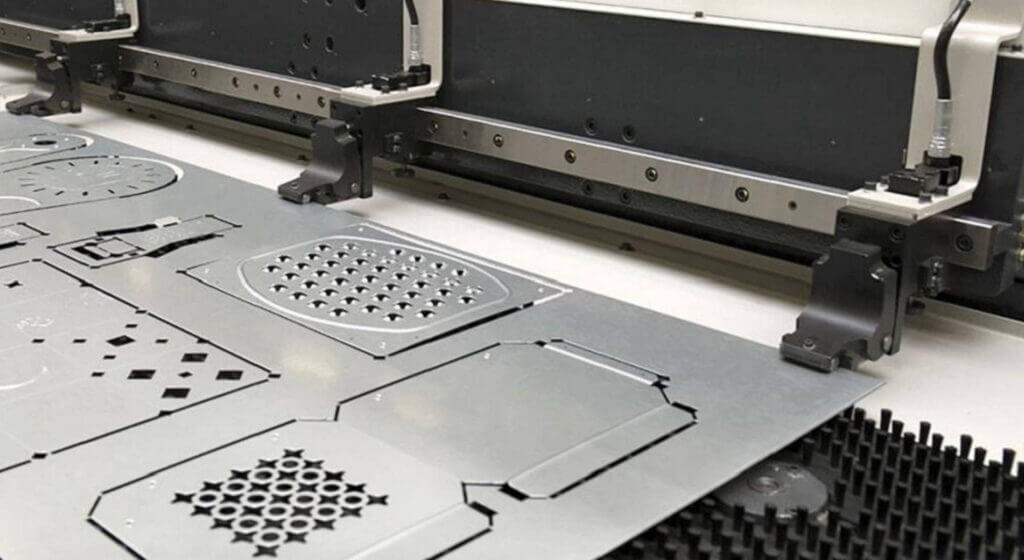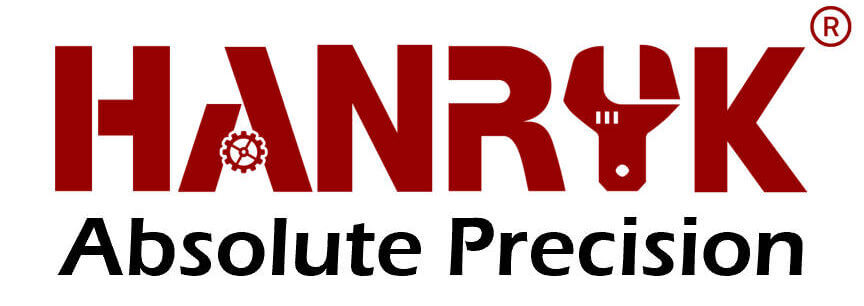适用Stamping和Punching的材料:为您的项目选择合适的材料”,包括适用的数据和图表
- by Hanryk® Team
- January 30, 2022
Stamping and punching are versatile manufacturing processes used to create a wide variety of parts and components. One of the key factors that determines the success of these processes is the material being used. In this article, we’ll explore the different types of materials that can be used for stamping and punching, and discuss some of the key considerations to keep in mind when choosing the right material for your project.

Common Materials for Stamping and Punching
There are a wide variety of materials that can be used for stamping and punching, each with its own set of advantages and disadvantages. Here are some of the most common materials used in these processes:
- Steel: Steel is one of the most commonly used materials for stamping and punching. It’s strong, durable, and easy to work with, making it a good choice for a wide range of applications.
- Aluminum: Aluminum is lightweight and has excellent corrosion resistance, making it a good choice for parts that need to be strong, but also lightweight.
- Copper: Copper is highly conductive and has excellent heat resistance, making it a good choice for electrical components and heat sinks.
- Brass: Brass is a combination of copper and zinc, and is often used for decorative parts or components that require good corrosion resistance.
- Plastics: Various types of plastics can be used for stamping and punching, each with their own set of advantages and disadvantages. Some common types include polycarbonate, PVC, and ABS.
Choosing the Right Material
When choosing a material for stamping and punching, there are a few key factors to consider:
Strength: Consider the strength requirements of your part or component. If it needs to be strong and durable, steel or aluminum may be good choices.
- Corrosion resistance: If your part will be exposed to harsh environmental conditions, such as saltwater or extreme temperatures, it’s important to choose a material that has good corrosion resistance. Stainless steel, aluminum, and brass are all good choices for parts that need to be corrosion-resistant.
- Conductivity: If your part needs to conduct electricity or heat, you’ll want to choose a material that has good conductivity. Copper is an excellent choice for electrical components, while aluminum is a good choice for heat sinks.
- Cost: Finally, it’s important to consider the cost of the material. Steel and aluminum are generally less expensive than copper or brass, for example, so they may be a better choice for applications where cost is a major consideration.
Stamping and Punching Material Comparison Chart
To help you choose the right material for your project, we’ve put together a comparison chart of the most common materials used in stamping and punching. This chart includes information on strength, corrosion resistance, conductivity, and cost:
|
材料 |
Strength |
Corrosion Resistance |
Conductivity |
Cost |
|
钢材 |
High |
Good |
Poor |
Low |
|
铝合金 |
Medium-High |
Excellent |
Poor |
Low-Medium |
|
铜合金 |
Medium |
Excellent |
Excellent |
High |
|
黄铜 |
Medium-High |
Good |
Poor |
Medium |
|
塑料材质 |
Low-Medium |
Poor |
Poor |
Low |
As you can see, each material has its own set of advantages and disadvantages, and the right choice will depend on the specific requirements of your project.
Choosing the right material for stamping and punching is critical for the success of your project. By considering factors such as strength, corrosion resistance, conductivity, and cost, you can make an informed decision on which material is the best fit for your project. Keep in mind that different materials may require different tooling and processes, so it’s important to work with a manufacturer who has experience working with the material you choose.
It’s also important to consider any regulatory requirements or standards that may apply to your project. For example, if your part will be used in a medical or aerospace application, there may be specific material requirements that need to be met.
In summary, choosing the right material for stamping and punching is an important decision that requires careful consideration of a variety of factors. By working with a knowledgeable manufacturer and considering the strength, corrosion resistance, conductivity, and cost of different materials, you can make an informed decision that leads to a successful outcome for your project.

